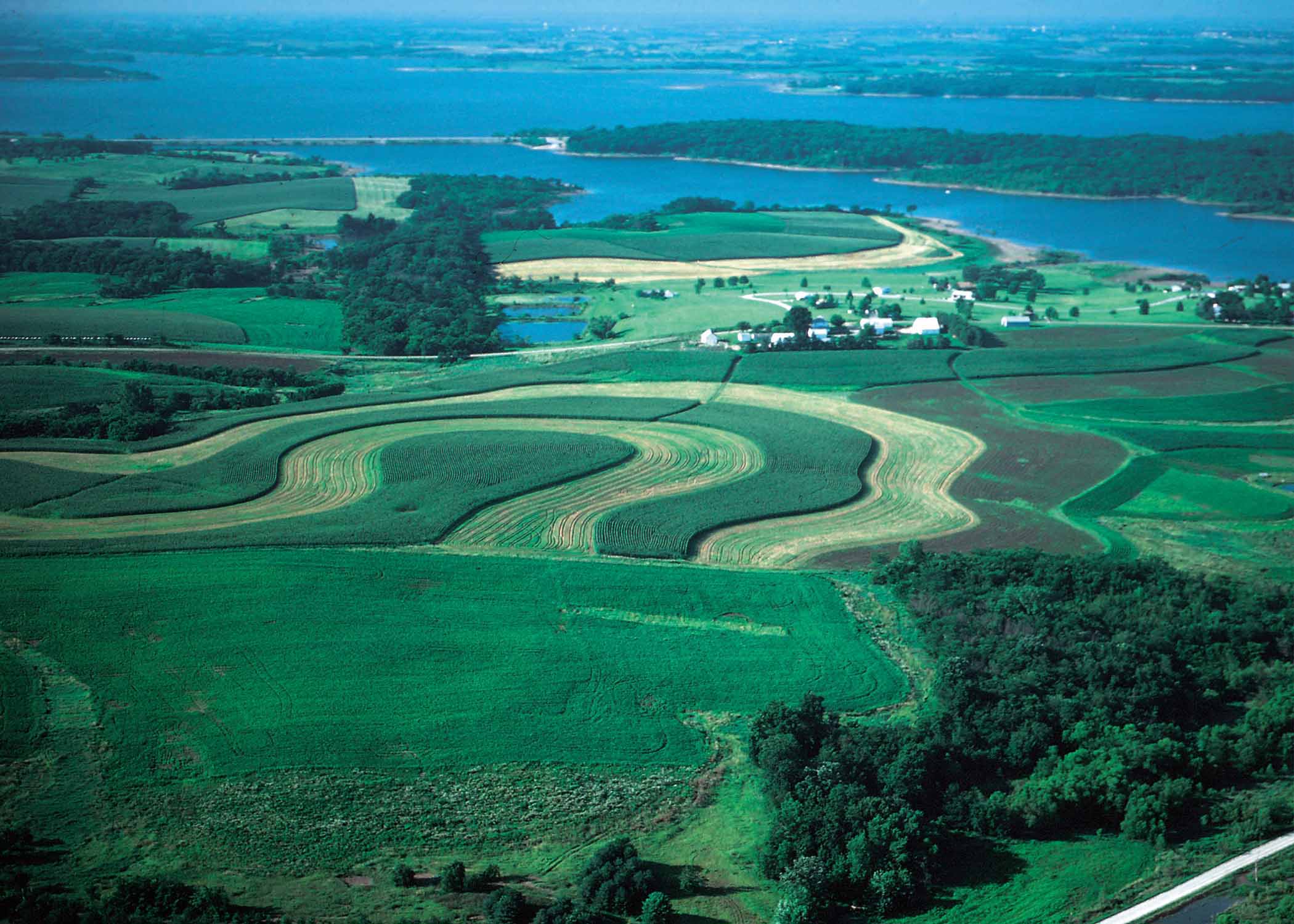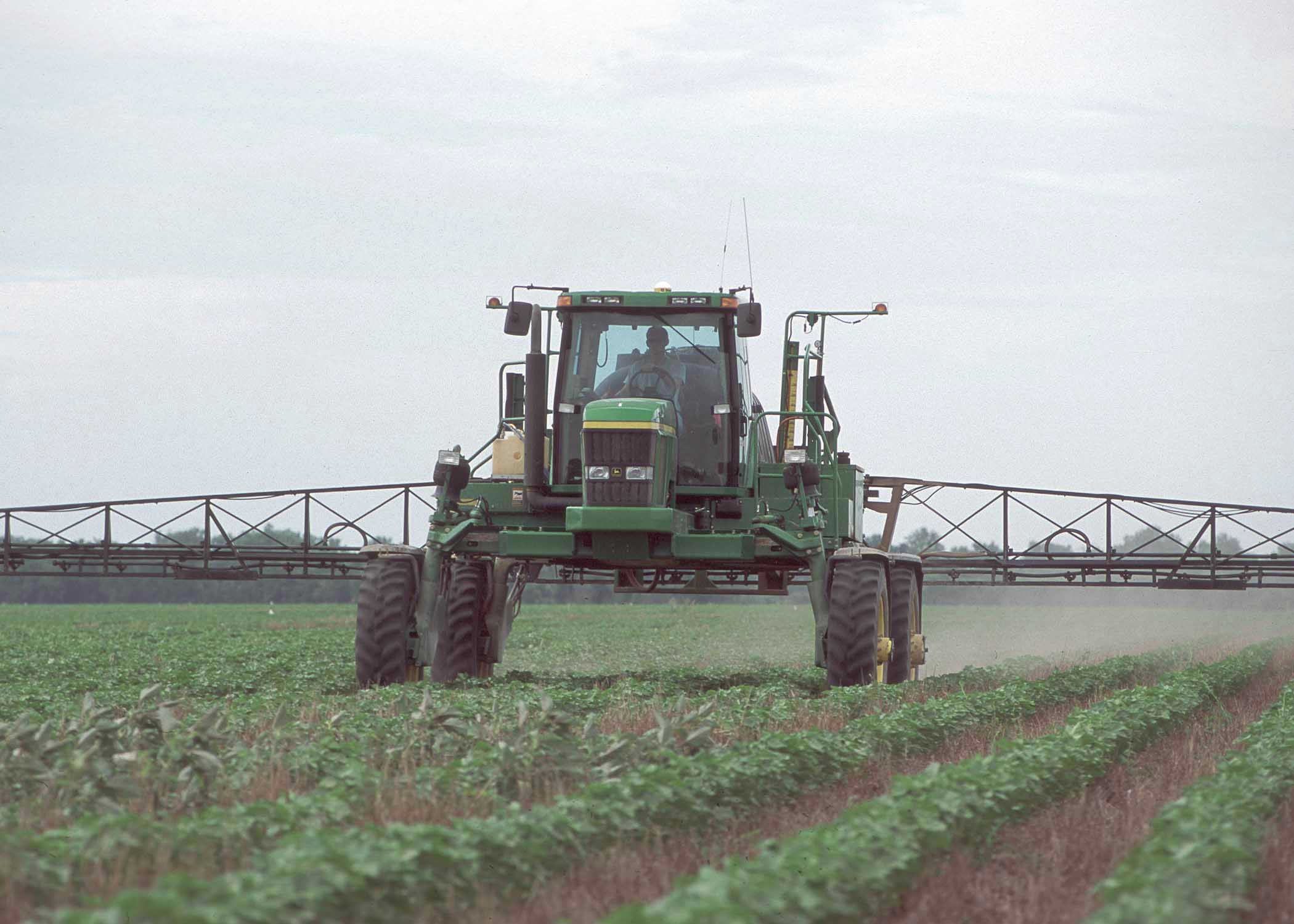Nutrient & Pest Management
Nutrient Management Definition
 Nutrient Management is defined as the management of the 4R's of Nutrient Management:
Nutrient Management is defined as the management of the 4R's of Nutrient Management:
-
Right amount (rate)
-
Right source
-
Right placement (method of application)
-
Right timing of commercial fertilizers, manure, soil amendments, and organic by-products to agricultural landscapes as a source of plant nutrients while protecting local air, soil and water quality.
The corner stone for Nutrient Management is the Natural Resources Conservation Service (NRCS) 590 Nutrient Management Conservation Practice Standard (PDF, 72 KB). Contact John Davis via phone at 202-720-2308, or email j.russell.davis@wdc.usda.gov
In addition to the 590 Nutrient Management Standard, NRCS provides further guidance on the application of nutrient management via the National Nutrient Management Policy (PDF, 33 KB) and National Instruction (PDF, 36 KB).
Nutrient Management Technical Notes
Title 190, Nutrient Management (NM) Technical Note No. 9 (PDF), Introduction to Waterborne Pathogens in Agricultural Watersheds has been produced for use by Natural Resources Conservation Service (NRCS) personnel, technical service providers (TSP), growers, and others. This document presents general background information about waterborne pathogens in agricultural watersheds. The document provides information on common pathogens, their fate and transport, their importance to agriculture, and their control. The document deals with both pathogens that can cause problems with contamination of food products and also pathogens that cause diseases in livestock. The document introduces many different types of pathogens, many concepts, and relates these things to NRCS conservation practices. The aim of this technical note is to outline the various aspects of waterborne pathogen fate, transport, and control, and relate them to NRCS conservation practices so that NRCS personnel can build pathogen management into the planning process.
Nutrient Management Tools
Nutrient Management Useful Links
Pest Management
 Pest Management is implemented utilizing an Integrated Pest Management (IPM) system process that is an ecosystem-based strategy. It is a sustainable approach to manage pests using a combination of techniques and technologies that may include chemical, biological, cultural, habitat manipulation, and use of resistant plant varieties. Chemicals and methods of chemical application are selected in a manner that minimizes risks to human health, beneficial and non-target organisms, and the natural resources.
Pest Management is implemented utilizing an Integrated Pest Management (IPM) system process that is an ecosystem-based strategy. It is a sustainable approach to manage pests using a combination of techniques and technologies that may include chemical, biological, cultural, habitat manipulation, and use of resistant plant varieties. Chemicals and methods of chemical application are selected in a manner that minimizes risks to human health, beneficial and non-target organisms, and the natural resources.
Pest management in conservation planning
Conservation planners start by identifying site-specific natural resource concerns in the conservation planning process. For pest management related resource concerns may include the potential for pest management activities to impact soil, water, air plants, animals, and humans. Once the site-specific natural resource concerns are identified, the conservation planner can provide technical assistance to clients to mitigate identified environmental risks and assist clients to adopt IPM techniques that protect natural resources.
Pest management risks are associated with the use of chemical, biological, and cultural pest suppression techniques. Tools such as the Revised Universal Soil Loss Equation, Version 2 (RUSLE2), the Wind Erosion Prediction System (WEPS), and if chemicals are used, the Windows Pesticide Screening Tool (WIN-PST) assist the planner to assess and plan appropriate mitigation strategies.
Useful Links and Documents
NRCS Pest Management Policy
National Integrated Pest Management (IPM) Practice Standard 595 (PDF)
Windows Pesticide Screening Tool (WIN-PST)
NRCS Agronomy Technical Note No. 5 – Pest Management in the Conservation Planning Process (PDF)
National Information System for the Regional IPM Centers
EPA - Integrated Pest Management (IPM) Principles
University of California, UC IPM